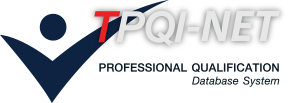หน่วยสมรรถนะ
Remove and install advanced aircraft electrical system components.
สาขาวิชาชีพการบิน
รายละเอียดหน่วยสมรรถนะ
| 1. รหัสหน่วยสมรรถนะ | AVT-FTN-4-065ZA |
| 2. ชื่อหน่วยสมรรถนะ | Remove and install advanced aircraft electrical system components. |
| 3. ทบทวนครั้งที่ | - / - |
| 4. สร้างใหม่ |
|
ปรับปรุง |
|
| 5. สำหรับชื่ออาชีพและรหัสอาชีพ (Occupational Classification) | |
|
|
|
| 6. คำอธิบายหน่วยสมรรถนะ (Description of Unit of Competency) | |
| This skill unit requires the use of workforce skills and use of maintenance documentation / publications in the removal and installation of advanced equipment from alternating current (AC) and direct current (DC) components the direct system of fixed and rotary wing aircraft have both AC and DC electrical systems during scheduled or unscheduled maintenance. The work can be done individually or as part of a team. | |
| 7. สำหรับระดับคุณวุฒิ |
| 1 | 2 | 3 | 4 | 5 | 6 | 7 | 8 |
|---|---|---|---|---|---|---|---|
| 8. กลุ่มอาชีพ (Sector) | |
| 7232 Aircraft Mechanics | |
| 9. ชื่ออาชีพและรหัสอาชีพอื่นที่หน่วยสมรรถนะนี้สามารถใช้ได้ (ถ้ามี) | |
| N/A | |
| 10. ข้อกำหนดหรือกฎระเบียบที่เกี่ยวข้อง (Licensing or Regulation Related) (ถ้ามี) | |
| ICAO Doc 7192 / EASA Part 66 | |
| 11. สมรรถนะย่อยและเกณฑ์การปฏิบัติงาน (Elements and Performance Criteria) |
| หน่วยสมรรถนะย่อย (EOC) | เกณฑ์ในการปฏิบัติงาน (Performance Criteria) | รหัส PC (ตามเล่มมาตรฐาน) |
รหัส PC (จากระบบ) |
|---|---|---|---|
| 103302.01 Remove AC and DC aircraft electrical system components. | 103302.01.01 System is rendered safe and prepared in accordance withthe applicable maintenance manual and isolation tags are fitted, wherenecessary, to ensure personnel safety, and electrical component removal iscarried out in accordance with the applicable maintenance manual whileobserving all relevant work health and safety(WHS) requirements | 103302.01.01 | 71224 |
| 103302.01 Remove AC and DC aircraft electrical system components. | 103302.01.02 Required maintenancedocumentation is completed and processed in accordance with standardenterprise procedures. Removed components are tagged andpackaged in accordance with specified procedures. | 103302.01.02 | 71225 |
| 103302.02 Install AC and DC aircraft electrical system components. | 103302.02.01 Electrical components to be installed are checked toconfirm correct part numbers, modification status, serviceability and shelflife. Physical installation of electrical components isperformed in accordance with the applicable maintenance manual, ensuringappropriate adjustment/alignment with mechanicalinterface is carried out | 103302.02.01 | 71226 |
| 103302.02 Install AC and DC aircraft electrical system components. | 103302.02.02 System is reinstatedto correct operational condition in preparation for testing, as necessary. Required maintenance documentation is completed andprocessed in accordance with standard enterprise procedures. | 103302.02.02 | 71227 |
| 12. ความรู้และทักษะก่อนหน้าที่จำเป็น (Pre-requisite Skill & Knowledge) | |
|
|
|
| 13. ทักษะและความรู้ที่ต้องการ (Required Skills and Knowledge) | |
|
(ก) ความต้องการด้านทักษะ
(ข) ความต้องการด้านความรู้
|
|
| 14. หลักฐานที่ต้องการ (Evidence Guide) | |
|
• environmental protection requirements relating to Halon fire extinguishers (e.g. Bromochlorodifluoromethane (BCF) |
|
| 15. ขอบเขต (Range Statement) | |
|
Industry standard procedures specified by manufacturers, regulatory authorities or the enterprise |
|
| 16. หน่วยสมรรถนะร่วม (ถ้ามี) | |
| N/A | |
| 17. อุตสาหกรรมร่วม/กลุ่มอาชีพร่วม (ถ้ามี) | |
| N/A | |
| 18. รายละเอียดกระบวนการและวิธีการประเมิน (Assessment Description and Procedure) | |
|
• This shall be established via records in the Log of Industrial Experience and Achievement or, where appropriate, an equivalent Industry Evidence Guide (for details refer to the Companion Volume Assessment Guidelines). |
|
